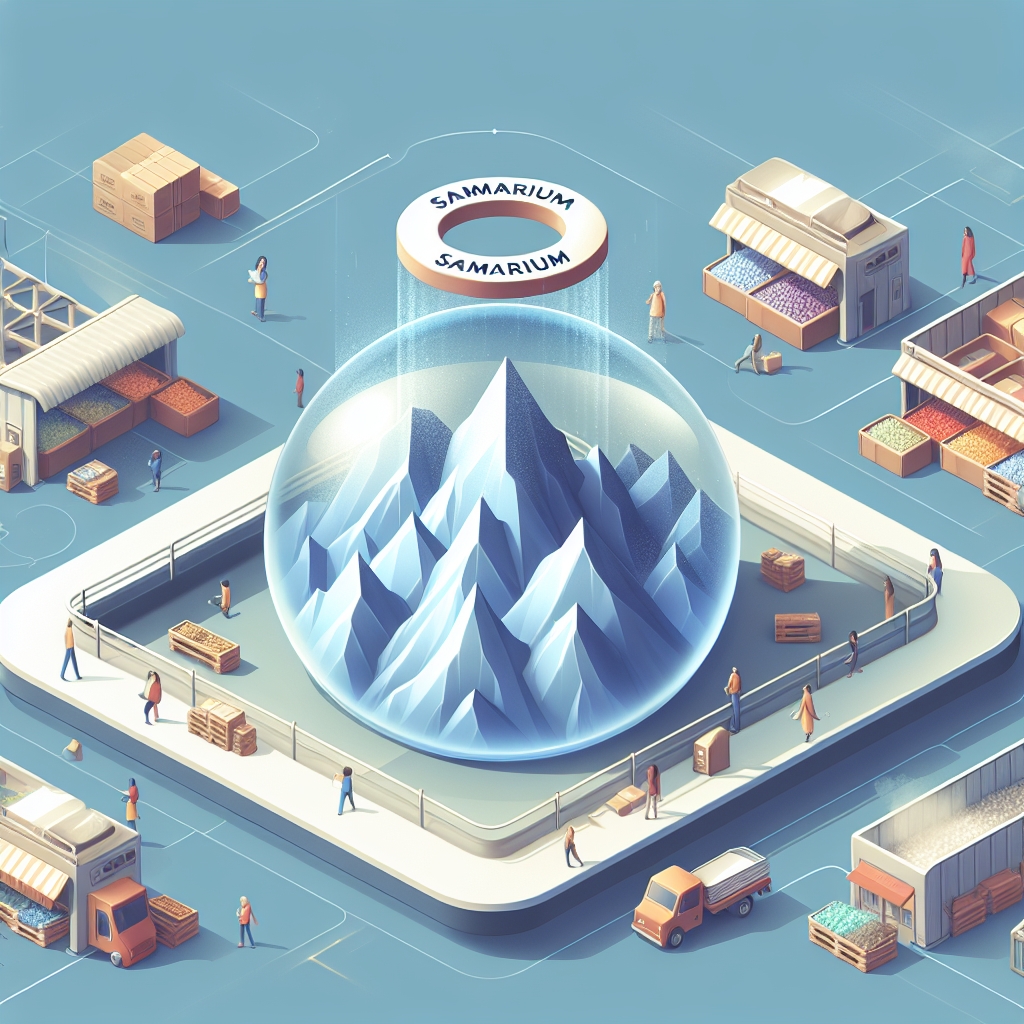The world of minerals and stones is vast and varied, with each element holding its unique properties and applications. Among these, rare earth elements (REEs) have garnered significant attention due to their critical role in modern technology and industry. Samarium, a member of the lanthanide series of the periodic table, is one such rare earth element that has fascinating applications and an interesting market dynamic. This article delves into the intricacies of Samarium, focusing on its cost, applications, and the factors influencing its price.
Understanding Samarium: Properties and Applications
Samarium is a moderately hard silvery metal that is relatively stable in air, tarnishing slowly in the presence of oxygen. It was discovered in 1879 by French chemist Paul Émile Lecoq de Boisbaudran, but it wasn’t until recent decades that its full potential was realized. Samarium has several isotopes, but Samarium-149 is of particular interest for its neutron absorption capabilities, making it a valuable component in nuclear reactors.
The applications of Samarium are diverse and impactful. One of its most notable uses is in Samarium-Cobalt (SmCo) magnets, which are known for their exceptional durability and performance at high temperatures. These magnets are crucial in various high-tech applications, including precision-guided weapons, aircraft, and satellite systems. Additionally, Samarium plays a vital role in the manufacturing of electronics, specifically in the production of headphones, miniature motors, and guitar pickups due to its magnetic properties.
Another significant application of Samarium is in the field of medicine. Samarium-153, a radioactive isotope, is used in the treatment of pain associated with bone cancer. This isotope helps in relieving pain by targeting and killing cancer cells in bones. The versatility of Samarium in both industrial and medical fields underscores its importance and the reason behind its demand in the global market.
Market Dynamics: Factors Influencing Samarium Cost
The cost of Samarium is influenced by a myriad of factors, ranging from extraction and processing costs to global demand and geopolitical issues. As with other rare earth elements, the extraction of Samarium is a complex and costly process. It is typically mined as a byproduct of iron ore mining, and its separation and purification require sophisticated technology and significant energy input, contributing to its overall cost.
Global demand is another critical factor affecting Samarium prices. With the increasing reliance on high-tech devices and renewable energy technologies, the demand for Samarium, especially for its use in magnets, has surged. This demand is expected to continue growing, further influencing its market price. Additionally, the limited number of suppliers and the concentration of rare earth mining operations in certain countries, primarily China, add a geopolitical dimension to Samarium’s cost. Any changes in export policies or trade relations can significantly impact the availability and price of Samarium on the global stage.
Environmental regulations and sustainability concerns also play a role in shaping the Samarium market. The mining and processing of rare earth elements, including Samarium, have been associated with environmental degradation and health risks. Stricter environmental regulations and the push for sustainable mining practices can lead to higher production costs, subsequently affecting the price of Samarium.
Current Trends and Future Outlook
As of the latest data, the price of Samarium oxide, a common form in which Samarium is traded, varies but has been experiencing an upward trend due to the factors mentioned above. The exact cost can fluctuate based on purity, quantity, and market conditions, but it generally ranges in the tens of dollars per kilogram. However, predicting the future price of Samarium is challenging due to the volatile nature of the rare earth market and the potential for technological advancements and policy changes.
Looking ahead, the demand for Samarium is likely to continue its upward trajectory, driven by the growth in sectors such as renewable energy, electronics, and defense. Innovations in recycling and extraction technology could potentially ease supply constraints and reduce costs. Moreover, efforts to diversify the supply chain and reduce reliance on a single source or country could lead to a more stable and sustainable Samarium market.
In conclusion, Samarium is a critical element with wide-ranging applications that significantly impact various industries. Its cost is influenced by complex factors, including extraction challenges, global demand, geopolitical issues, and environmental regulations. While the future of the Samarium market is uncertain, its importance in advancing technology and supporting the transition to a more sustainable and technologically advanced future is undeniable.

